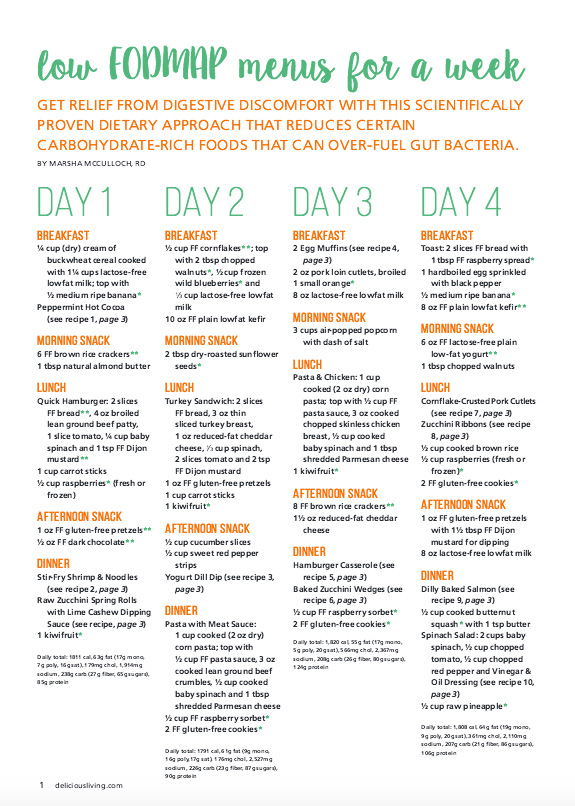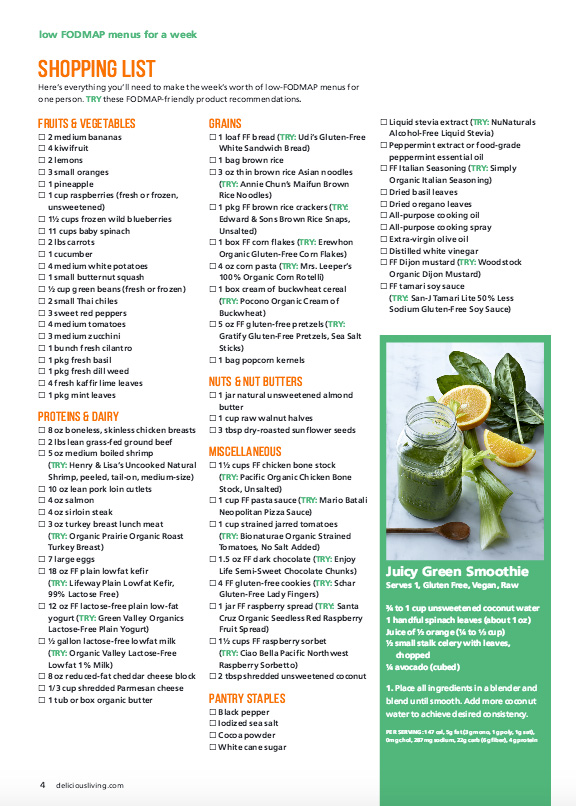The newest New Hope Blogger Box had some great options for gluten-free, soy-free, dairy-free, health-minded people. Whether you are Paleo or a prefer a house of carbs (like I do), there’s something here to suit your snacking needs.
Oats are one of those things that cause confusion in the gluten-free world. There are two issues to consider: 1.Oats do not have gluten in them, but they do have a protein that is similar to gluten and it can cause problems for those who are both gluten-intolerant or celiac. 2. Oats are mostly processed on the same equipment as wheat and therefore there is a high likelihood of cross-contamination unless they are certified gluten-free. This makes granola off limits for many, especially those that follow a grain-free Paleo diet, or at least it did until now. The #NewHopeBloggerBox had this delicious sample in it from Grandy Oats, and it really is a fantastic substitute for oat-based granola. I’ve happily never had a problem with oats so I eat granola pretty much everyday, and this one tastes just like any other I’ve munched on lately.
If you are gluten-free and soy-free, finding a protein bar is nearly impossible. These Hi-Health bars are both, and some are vegan as well, using pea protein, while other flavors contain hormone-free whey. I probably should have used something other than a soy candle to prop up the bar since they are soy-free, but hey, it was handy.
Turmeric is all the rage these days, and with very good reason. It helps with inflammation, has adaptogenic properties, and is probably the most rigorously tested herb out there. Gaia makes taking your Turmeric easy and enjoyable with this golden milk powder. Just add it to warmed milk or milk alternative, and reap the benefits.
The literature with Gaia’s golden milk encourages the drinker to add one of their tinctures to the golden milk for extra health benefits. They suggest Ginger for digestive support, or Holy Basil for easing stress. Raw and Root puts extra herbal support right into their golden milk powder, with Ashwagandha, Gotu Kola, and others. (Gaia’s actually has Ashwagandha in it too. Turmeric has reigned supreme for some time now, but I think Ashwagandha’s star is rising if this box of samples is any indication.)
This is the second time Jackson’s Honest has been part of the New Hope Blogger Box so my kids were eager to dig into this bag. They have a heartbreaking story behind their mission based brand that has directly resulted in clean, organic, simple ingredient lists. This chip has only three ingredients: Organic Yellow Corn, Organic Coconut Oil, and Salt, and that’s clearly all a chip needs because these are delicious. Love to Jackson’s family.
![F14D29AB-AF1D-4DBE-844D-5D3E48F2B9D2[1]](https://i0.wp.com/botanicalalchemyandapothecary.com/wp-content/uploads/2018/02/F14D29AB-AF1D-4DBE-844D-5D3E48F2B9D21.jpg?resize=828.75%2C969&ssl=1)
Speaking of clean ingredients, have you looked at your mayo jar lately? Chosen Foods Avocado Oil Mayo is clean, soy-free, non-gmo, and made with cage free eggs. Real food.
Cascadian Farms has a new flavor of granola and it tastes like a lemon blueberry muffin. I’ve never had lemony granola before and was skeptical, but it actually really works. This granola is not made with certified gluten-free oats though, so if you are following a gluten-free diet then this won’t work for you. I tried it because I’ve been systematically working to get over my gluten-intolerance so I figured a little cross-contamination wouldn’t cause me harm, and it hasn’t.
![3433E615-F965-42D9-A573-2C29CE8FBC18[1]](https://i0.wp.com/botanicalalchemyandapothecary.com/wp-content/uploads/2018/02/3433E615-F965-42D9-A573-2C29CE8FBC181.jpg?resize=828.75%2C829&ssl=1)
Have a great holiday weekend! Do something special and try something new. Please subscribe for weekly posts about herbs, natural health, and green beauty, and please share this with anyone who might be interested.

![AF8A8C41-2E46-4C24-93E5-00D8E4C3B65A[1] AF8A8C41-2E46-4C24-93E5-00D8E4C3B65A[1]](https://i0.wp.com/botanicalalchemyandapothecary.com/wp-content/uploads/2018/02/AF8A8C41-2E46-4C24-93E5-00D8E4C3B65A1.jpg?w=518&h=561&ssl=1)
![87A7C756-F879-4F5D-BEA8-56A4B00B8631[1] 87A7C756-F879-4F5D-BEA8-56A4B00B8631[1]](https://i0.wp.com/botanicalalchemyandapothecary.com/wp-content/uploads/2018/02/87A7C756-F879-4F5D-BEA8-56A4B00B86311.jpg?w=302&h=302&crop=1&ssl=1)
![E7AF9205-9206-49D0-A7CA-115581D8042C[1] E7AF9205-9206-49D0-A7CA-115581D8042C[1]](https://i0.wp.com/botanicalalchemyandapothecary.com/wp-content/uploads/2018/02/E7AF9205-9206-49D0-A7CA-115581D8042C1.jpg?w=302&h=255&ssl=1)
![C5FD884A-3767-4A7F-AC25-689F4BF471BB[1] C5FD884A-3767-4A7F-AC25-689F4BF471BB[1]](https://i0.wp.com/botanicalalchemyandapothecary.com/wp-content/uploads/2018/02/C5FD884A-3767-4A7F-AC25-689F4BF471BB1.jpg?w=477&h=301&ssl=1)
![BC4C9905-17CC-4AE3-860B-EEC7AC4F25B8[1] BC4C9905-17CC-4AE3-860B-EEC7AC4F25B8[1]](https://i0.wp.com/botanicalalchemyandapothecary.com/wp-content/uploads/2018/02/BC4C9905-17CC-4AE3-860B-EEC7AC4F25B81.jpg?w=343&h=301&ssl=1)
![563E711A-92BC-45DF-88C7-608AF86AABE5[1] 563E711A-92BC-45DF-88C7-608AF86AABE5[1]](https://i0.wp.com/botanicalalchemyandapothecary.com/wp-content/uploads/2018/02/563E711A-92BC-45DF-88C7-608AF86AABE51.jpg?w=410&h=410&crop=1&ssl=1)
![73C4A1FD-546A-4AD5-9380-2BA8050F9B49[1] 73C4A1FD-546A-4AD5-9380-2BA8050F9B49[1]](https://i0.wp.com/botanicalalchemyandapothecary.com/wp-content/uploads/2018/02/73C4A1FD-546A-4AD5-9380-2BA8050F9B491.jpg?w=410&h=410&crop=1&ssl=1)
![F0AE2455-2479-4852-B2AD-6B4B68E1C6C3[1] F0AE2455-2479-4852-B2AD-6B4B68E1C6C3[1]](https://i0.wp.com/botanicalalchemyandapothecary.com/wp-content/uploads/2018/02/F0AE2455-2479-4852-B2AD-6B4B68E1C6C31.jpg?w=410&h=410&crop=1&ssl=1)
![163E268D-A6B9-4514-B43C-9ED385974C25[1] 163E268D-A6B9-4514-B43C-9ED385974C25[1]](https://i0.wp.com/botanicalalchemyandapothecary.com/wp-content/uploads/2018/02/163E268D-A6B9-4514-B43C-9ED385974C251.jpg?w=410&h=410&crop=1&ssl=1)
![CA569200-898A-4573-B9C1-A2A7FED720F9[1] CA569200-898A-4573-B9C1-A2A7FED720F9[1]](https://i0.wp.com/botanicalalchemyandapothecary.com/wp-content/uploads/2018/02/CA569200-898A-4573-B9C1-A2A7FED720F91.jpg?w=407&h=492&ssl=1)
![AAFA13BA-3FFC-462E-AC4C-5FF9B28D0411[1] AAFA13BA-3FFC-462E-AC4C-5FF9B28D0411[1]](https://i0.wp.com/botanicalalchemyandapothecary.com/wp-content/uploads/2018/02/AAFA13BA-3FFC-462E-AC4C-5FF9B28D04111.jpg?w=413&h=492&ssl=1)





![8CAC41BA-B986-461E-BAC1-B87B5309F6AA[1]](https://i0.wp.com/botanicalalchemyandapothecary.com/wp-content/uploads/2018/01/8CAC41BA-B986-461E-BAC1-B87B5309F6AA1.jpg?resize=300%2C300&ssl=1) overcast or rainy or both. We’ve managed to keep alive a few little plant-babies in the house but I want some bigger ones to really fill the space. I saw this article on
overcast or rainy or both. We’ve managed to keep alive a few little plant-babies in the house but I want some bigger ones to really fill the space. I saw this article on 







![39FBC3B3-0F39-4588-AB5B-3C9297420CC7[1] 39FBC3B3-0F39-4588-AB5B-3C9297420CC7[1]](https://i0.wp.com/botanicalalchemyandapothecary.com/wp-content/uploads/2017/12/39FBC3B3-0F39-4588-AB5B-3C9297420CC71.jpg?w=427&h=428&ssl=1)
![358B4358-682E-41F2-B5BB-EB99D945DA3B[1] 358B4358-682E-41F2-B5BB-EB99D945DA3B[1]](https://i0.wp.com/botanicalalchemyandapothecary.com/wp-content/uploads/2017/12/358B4358-682E-41F2-B5BB-EB99D945DA3B1.jpg?w=393&h=428&ssl=1)
![7EA6F214-7750-46D5-B64D-2DB97A8E5628[1] 7EA6F214-7750-46D5-B64D-2DB97A8E5628[1]](https://i0.wp.com/botanicalalchemyandapothecary.com/wp-content/uploads/2017/12/7EA6F214-7750-46D5-B64D-2DB97A8E56281.jpg?w=548&h=549&ssl=1)
![2379A31B-D1F4-4D44-B384-290949061F1B[1] 2379A31B-D1F4-4D44-B384-290949061F1B[1]](https://i0.wp.com/botanicalalchemyandapothecary.com/wp-content/uploads/2017/12/2379A31B-D1F4-4D44-B384-290949061F1B1.jpg?w=272&h=273&ssl=1)
![9EE20E25-6B6A-4965-BC15-075AAAC7153C[1] 9EE20E25-6B6A-4965-BC15-075AAAC7153C[1]](https://i0.wp.com/botanicalalchemyandapothecary.com/wp-content/uploads/2017/12/9EE20E25-6B6A-4965-BC15-075AAAC7153C1.jpg?w=272&h=272&crop=1&ssl=1)
![88A159C2-6A06-492E-8153-34C0E069939F[1] 88A159C2-6A06-492E-8153-34C0E069939F[1]](https://i0.wp.com/botanicalalchemyandapothecary.com/wp-content/uploads/2017/12/88A159C2-6A06-492E-8153-34C0E069939F1.jpg?w=403&h=505&ssl=1)
![8E164685-CC11-4730-8DE1-1E054BBCDDE2[1] 8E164685-CC11-4730-8DE1-1E054BBCDDE2[1]](https://i0.wp.com/botanicalalchemyandapothecary.com/wp-content/uploads/2017/12/8E164685-CC11-4730-8DE1-1E054BBCDDE21.jpg?w=417&h=505&ssl=1)
![C7A4382B-45C4-4F75-95E2-949CC0B82568[1] C7A4382B-45C4-4F75-95E2-949CC0B82568[1]](https://i0.wp.com/botanicalalchemyandapothecary.com/wp-content/uploads/2017/12/C7A4382B-45C4-4F75-95E2-949CC0B825681.jpg?w=824&h=857&ssl=1)

![2CB3E9E1-9CE6-4695-B8AB-C731A4B4AECB[1] 2CB3E9E1-9CE6-4695-B8AB-C731A4B4AECB[1]](https://i0.wp.com/botanicalalchemyandapothecary.com/wp-content/uploads/2017/12/2CB3E9E1-9CE6-4695-B8AB-C731A4B4AECB1.jpg?w=372&h=324&ssl=1)
![03C9466E-A6B5-483C-8A91-B93B9228EB4C[1] 03C9466E-A6B5-483C-8A91-B93B9228EB4C[1]](https://i0.wp.com/botanicalalchemyandapothecary.com/wp-content/uploads/2017/12/03C9466E-A6B5-483C-8A91-B93B9228EB4C1.jpg?w=448&h=324&ssl=1)

![F2261A3B-52A6-4674-9F80-8194B354D397[1]](https://i0.wp.com/botanicalalchemyandapothecary.com/wp-content/uploads/2017/12/F2261A3B-52A6-4674-9F80-8194B354D3971.jpg?resize=828.75%2C829&ssl=1)
![A81A3776-69C4-4B29-A043-60557620C05D[1]](https://i0.wp.com/botanicalalchemyandapothecary.com/wp-content/uploads/2017/12/A81A3776-69C4-4B29-A043-60557620C05D1.jpg?resize=828.75%2C829&ssl=1)
![A008679D-ADB6-4AFD-82E1-5235B4D0E01D[1] A008679D-ADB6-4AFD-82E1-5235B4D0E01D[1]](https://i0.wp.com/botanicalalchemyandapothecary.com/wp-content/uploads/2017/12/A008679D-ADB6-4AFD-82E1-5235B4D0E01D1.jpg?w=548&h=548&crop=1&ssl=1)
![120A6B08-7F23-4FAA-84D0-BA8A2C48CB30[1] 120A6B08-7F23-4FAA-84D0-BA8A2C48CB30[1]](https://i0.wp.com/botanicalalchemyandapothecary.com/wp-content/uploads/2017/12/120A6B08-7F23-4FAA-84D0-BA8A2C48CB301.jpg?w=272&h=272&crop=1&ssl=1)
![A18CAC3A-AD31-49DC-9200-9D4CDEA65B45[1] A18CAC3A-AD31-49DC-9200-9D4CDEA65B45[1]](https://i0.wp.com/botanicalalchemyandapothecary.com/wp-content/uploads/2017/12/A18CAC3A-AD31-49DC-9200-9D4CDEA65B451.jpg?w=272&h=272&crop=1&ssl=1)
![46E6B9E0-CDFE-484B-865E-DC9EAD882993[1]](https://i0.wp.com/botanicalalchemyandapothecary.com/wp-content/uploads/2017/12/46E6B9E0-CDFE-484B-865E-DC9EAD8829931.jpg?resize=819%2C1024&ssl=1)
![13C35F30-B2D6-40DC-9997-F2310C153E1D[1]](https://i0.wp.com/botanicalalchemyandapothecary.com/wp-content/uploads/2017/12/13C35F30-B2D6-40DC-9997-F2310C153E1D1.jpg?resize=828.75%2C829&ssl=1)
![7C1B0AEA-38EE-4B48-AD2A-95AF38FF386E[1] 7C1B0AEA-38EE-4B48-AD2A-95AF38FF386E[1]](https://i0.wp.com/botanicalalchemyandapothecary.com/wp-content/uploads/2017/12/7C1B0AEA-38EE-4B48-AD2A-95AF38FF386E1.jpg?w=548&h=549&ssl=1)
![A9312552-507D-4F2D-A6EB-9183DABA6431[1] A9312552-507D-4F2D-A6EB-9183DABA6431[1]](https://i0.wp.com/botanicalalchemyandapothecary.com/wp-content/uploads/2017/12/A9312552-507D-4F2D-A6EB-9183DABA64311.jpg?w=272&h=273&ssl=1)
![C728EAFE-CDC7-4D2D-AEFD-5E56D1382170[1] C728EAFE-CDC7-4D2D-AEFD-5E56D1382170[1]](https://i0.wp.com/botanicalalchemyandapothecary.com/wp-content/uploads/2017/12/C728EAFE-CDC7-4D2D-AEFD-5E56D13821701.jpg?w=272&h=272&crop=1&ssl=1)

![280F9A5A-A3EE-4CF2-9387-2AEACC88EBEE[1]](https://i0.wp.com/botanicalalchemyandapothecary.com/wp-content/uploads/2017/11/280F9A5A-A3EE-4CF2-9387-2AEACC88EBEE1.jpg?resize=300%2C177&ssl=1) Ashwagandha and other adaptogens are showing up more and more in functional foods and drinks, such as
Ashwagandha and other adaptogens are showing up more and more in functional foods and drinks, such as